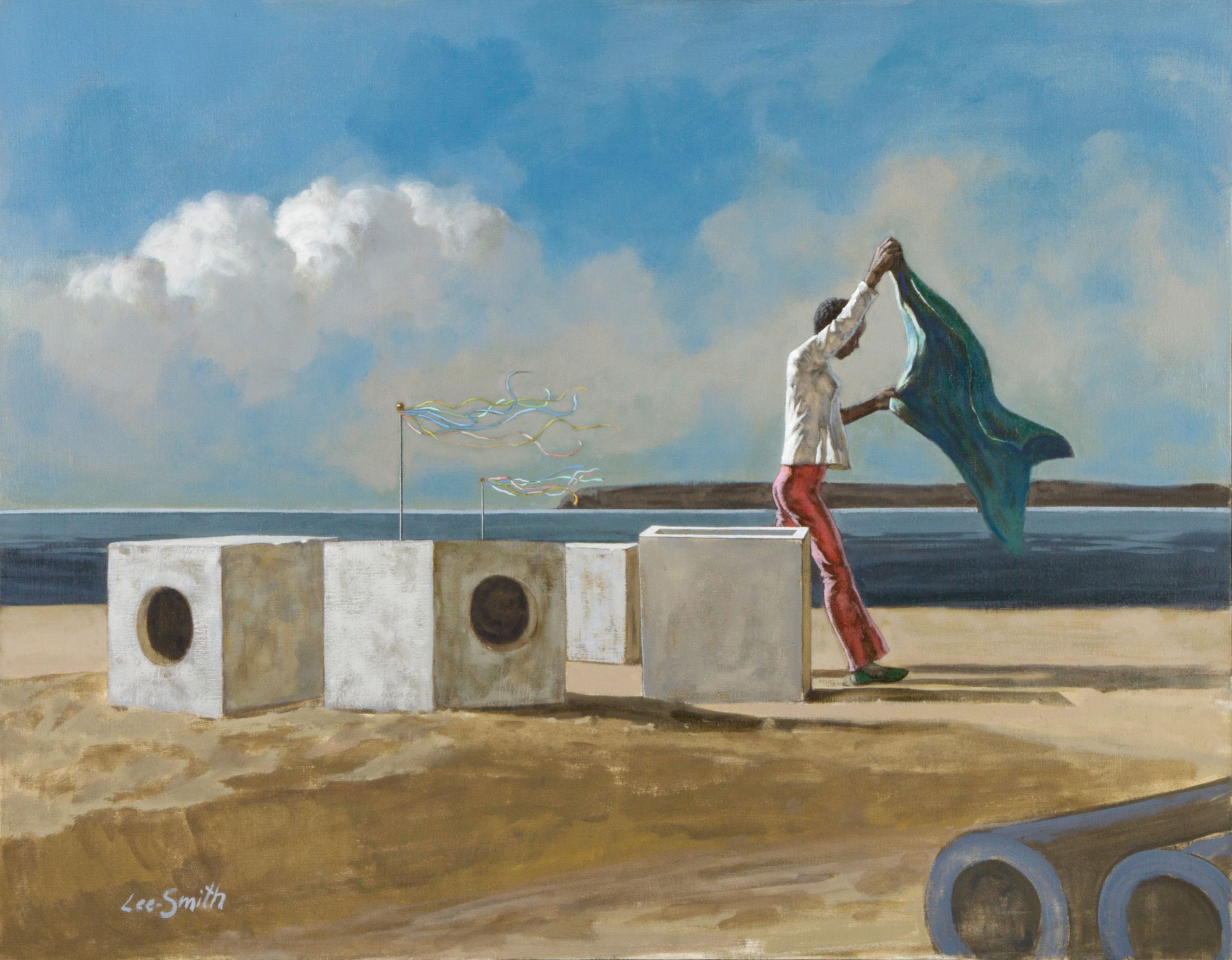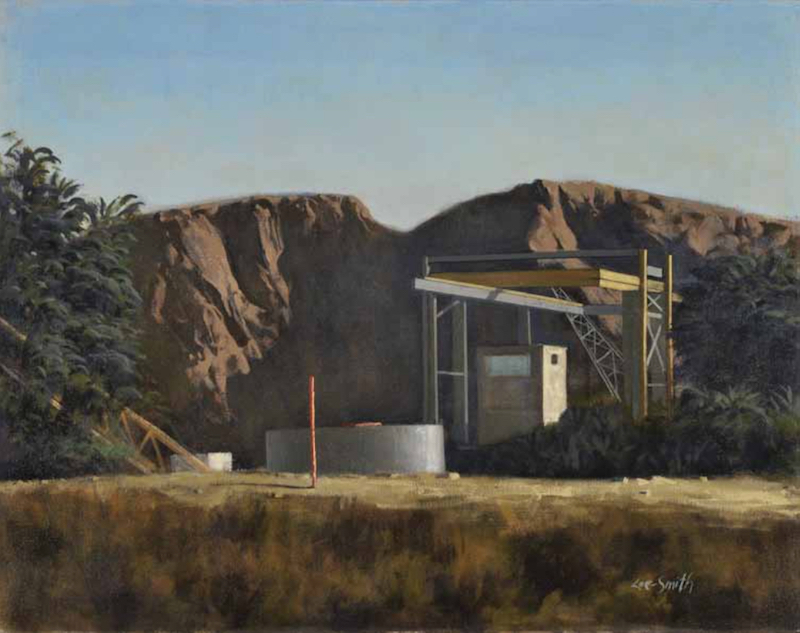Hughie Lee-Smith • Ohio (1915-1999)
Industrial Scene C: 1953 • Watercolor on Paper 15-1/2" x 22-1/4"
Canton Museum of Art Permanent Collection • Purchased in Memory of Austin Lynch & Mary K. Lynch, 2011.19
In the 1920s trains traveling north still went clickety-clack as they waved goodbye to Jim Crow. Ten-year old Hughie Smith sat quietly in his only starched shirt and neatly pressed cotton knickers, a worn belt wrapped twice around his waist because his grandfather’s belly had been so much bigger. For 2 days he sat alone in the Negro Car at the back of the train. Five cars ahead flappers and dandy’s drank champagne and danced, never looking out the windows to see the Moss-draped Magnolias of central Georgia give way to the snow-covered industrial smokestacks of Ohio.
Finally, the train stopped at the old Cleveland terminal along the crooked river. In the distance, Hughie saw smoke and fire bellowing from refineries and steel mills scattered along the flats on either bank. He had last seen his mother six years before when she left him with Grandmother Queenie who raised him from that day to this. Now his mother was on the platform, a solitary black face standing out in a sea of white. Then she took him home.
(story continues below break)
INTERESTING STORIES FROM OUR SPONSORS

Years later, Hughie, now known by the more distinguished surname, Lee-Smith, talked about the many solitary figures in his art: “In my case, aloneness, I think, has stemmed from the fact that I’m black. Unconsciously it has a lot to do with a sense of alienation.” Lee-Smith expressed this solitude in a classically realistic style that moved toward Surrealism as he matured. “I think my paintings have to do with an invisible life – a reality on a different level.” His solitary figures found themselves placed among geometric concrete forms, or standing beneath circular portals like doorways to another world. His faceless people were placed beneath fluttering carnival flags, remnants from his life with Grandmother Queenie in Atlanta.
Hughie Lee-Smith spent his life painting isolation and alienation, yet somehow managed to show hopefulness at the same time. After all, he may have been the first black art teacher at many schools, and the first black member of the National Academy of Design. But he got in and others followed.
When Hughie Lee-Smith died in 1999, he had outlived, outworked and outsmarted Jim Crow. He died in the arts community near Albuquerque, surrounded by people just like him. Artists. Lots of them.
4 Ways to Sound Smart When Viewing at The Canton Museum of Art
1.
“He was a skilled teacher at a number of schools for most of his adult life. He taught what he could do quite well.”
2.
“While teaching at Karamu House in Cleveland in the late 1930s he also danced with a modern dance troupe, making him one of America’s first multi-media artists.”
3.
“He often used carnival imagery in his paintings, a throwback to childhood carnivals he visited when living with his grandmother, Queenie, in Atlanta.”
4.
“While in the Navy during WWII he painted large murals about the “Negro in U.S. History” to build morale for black recruits.”
Lee-Smith Timeline. Scroll over images to see timeline.



















